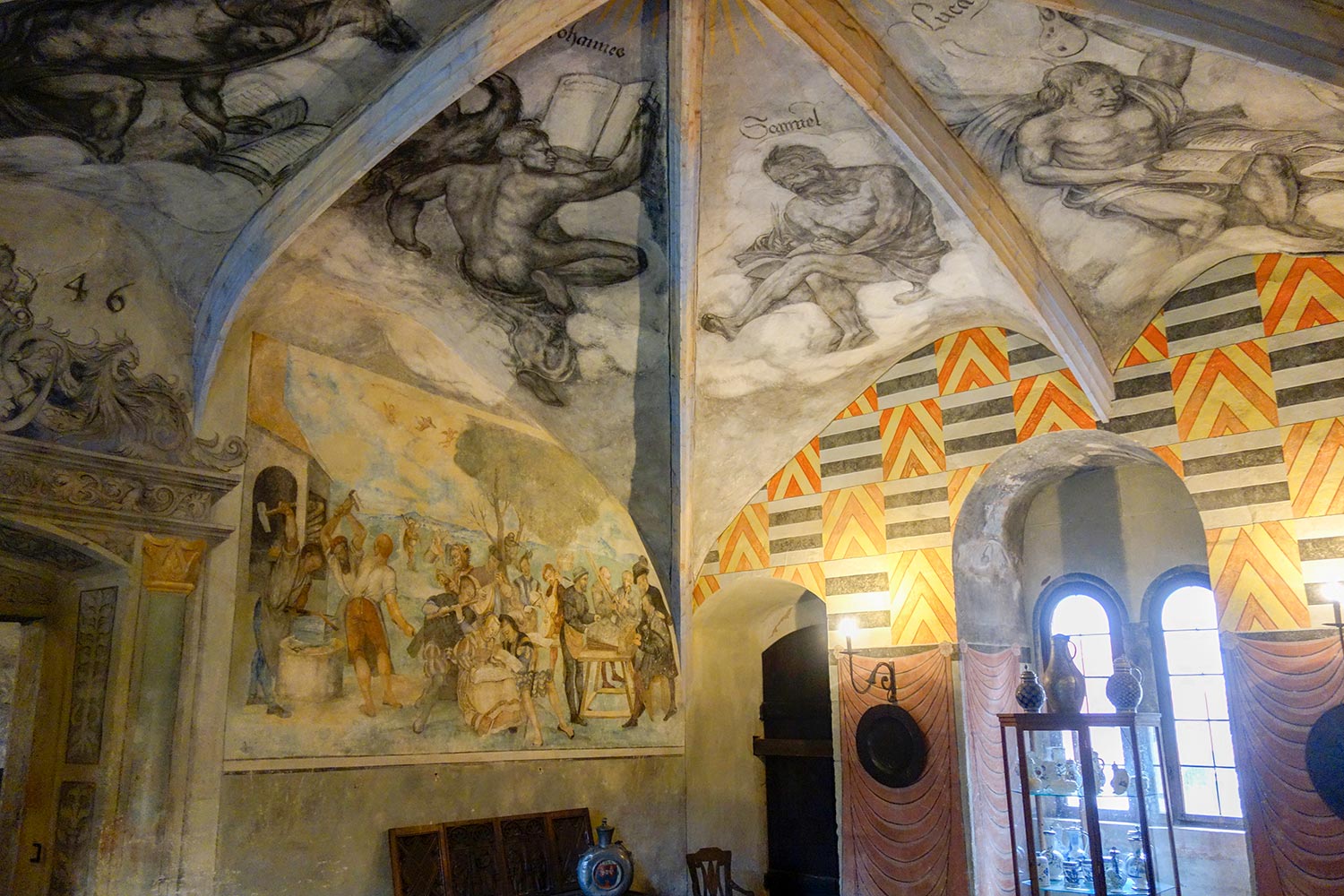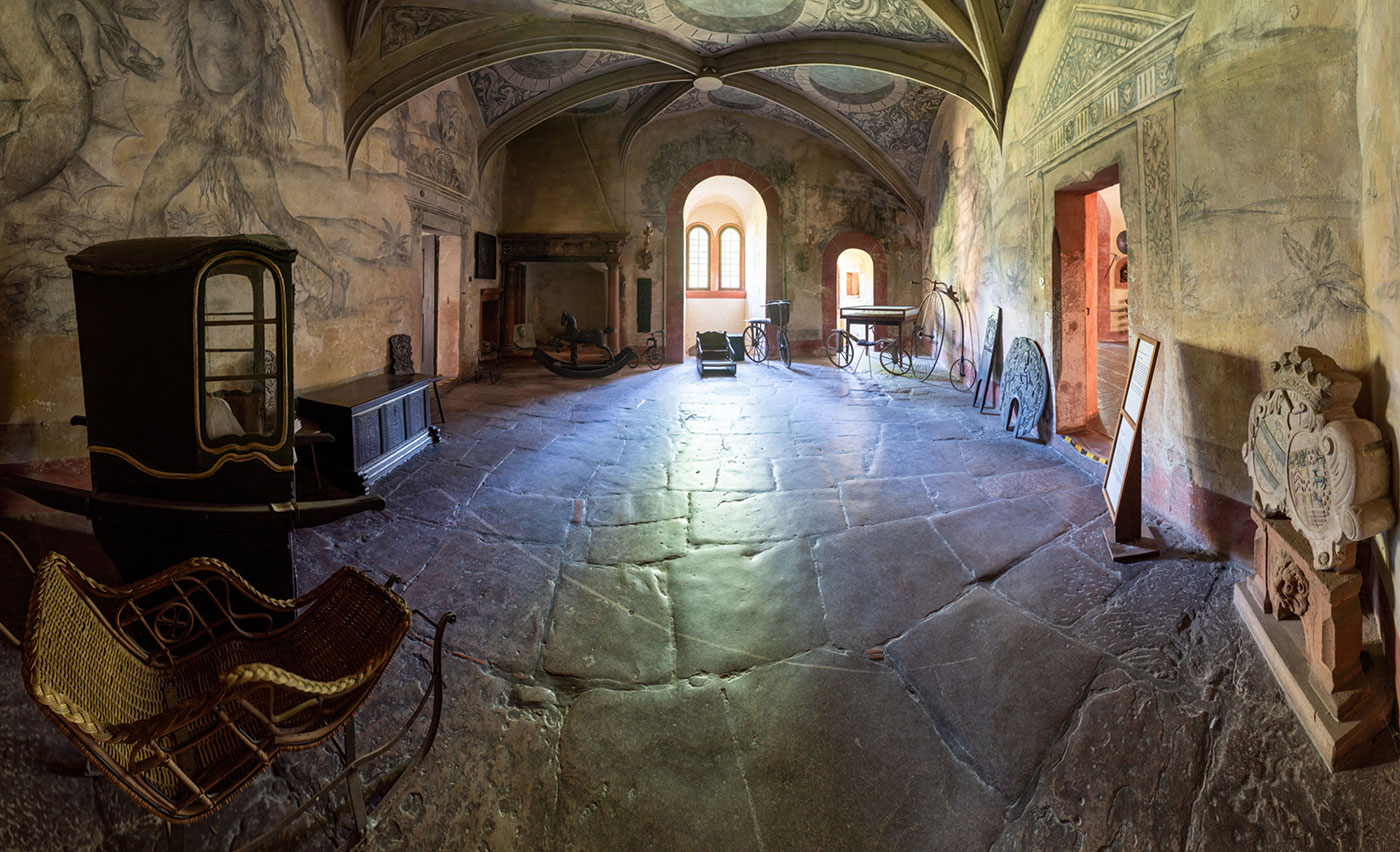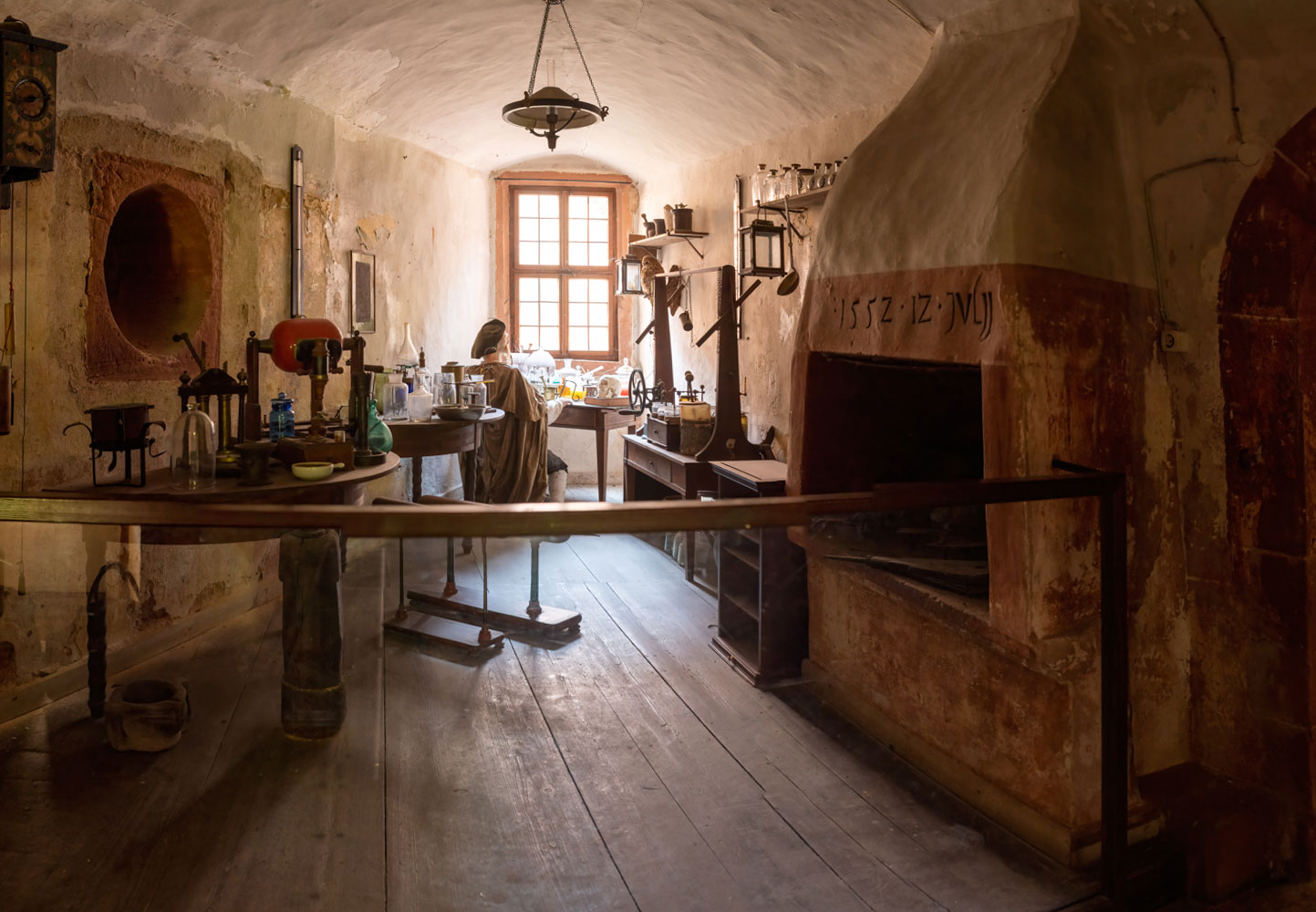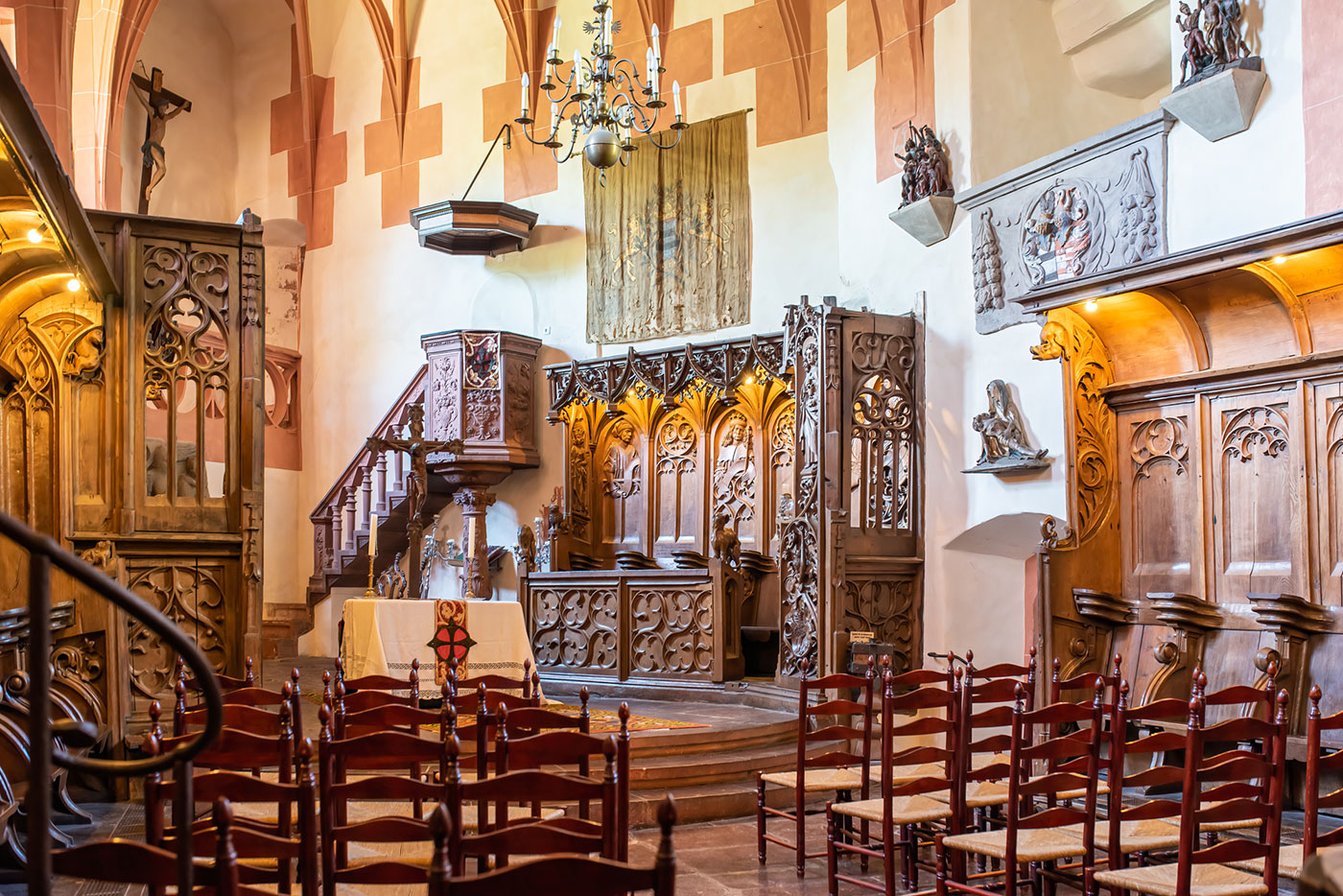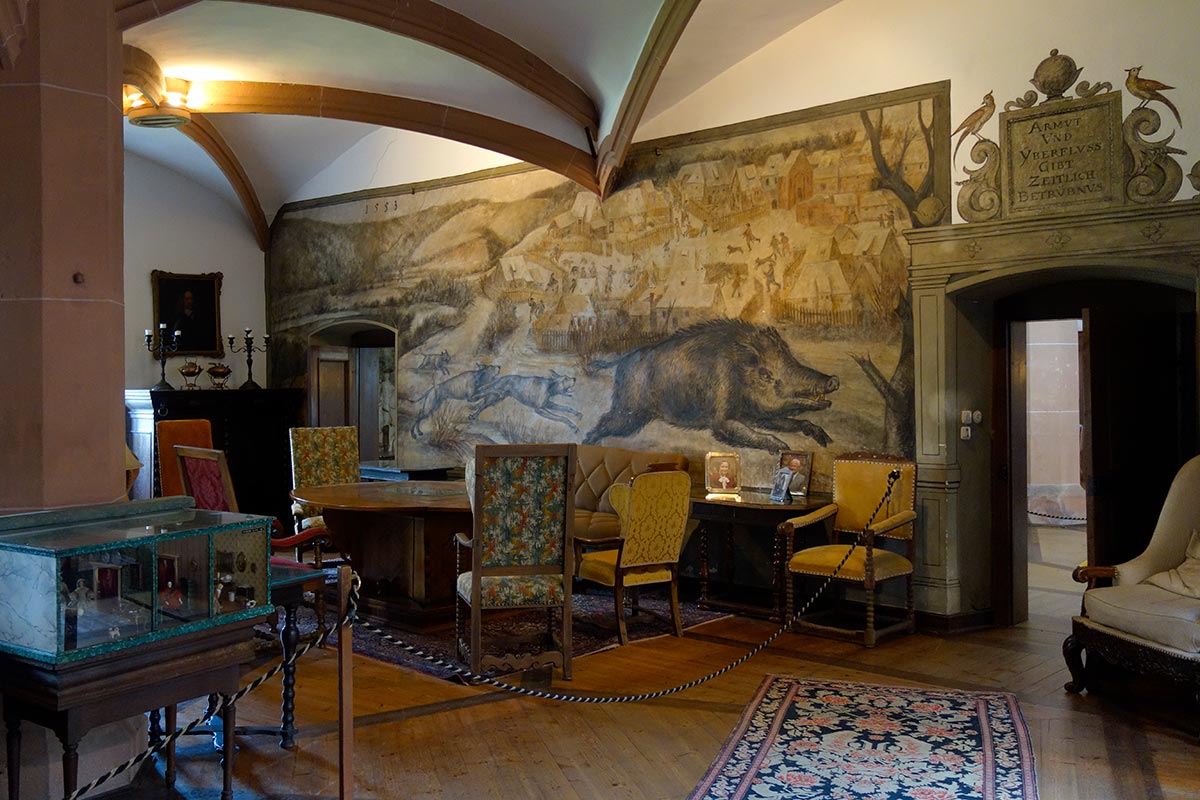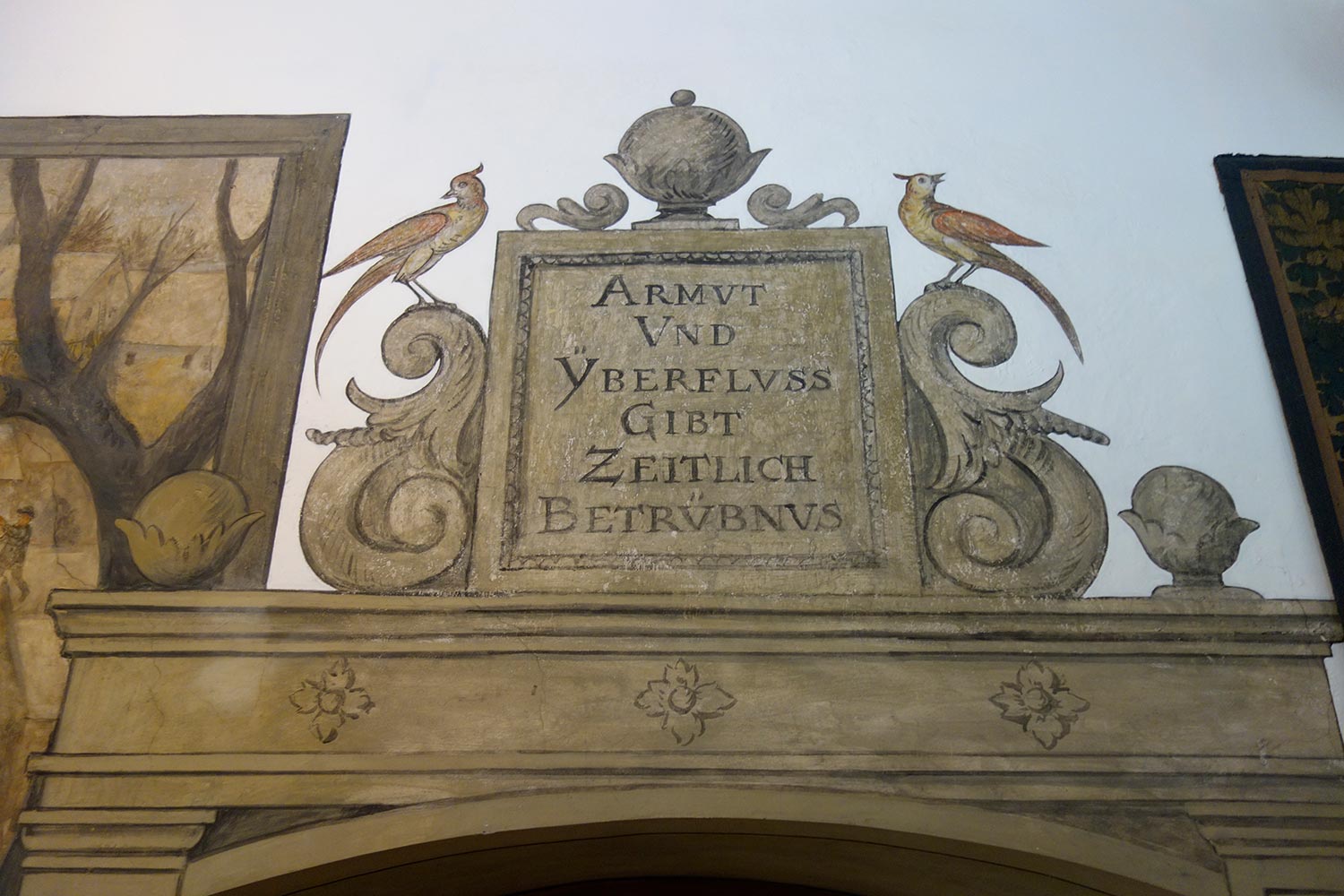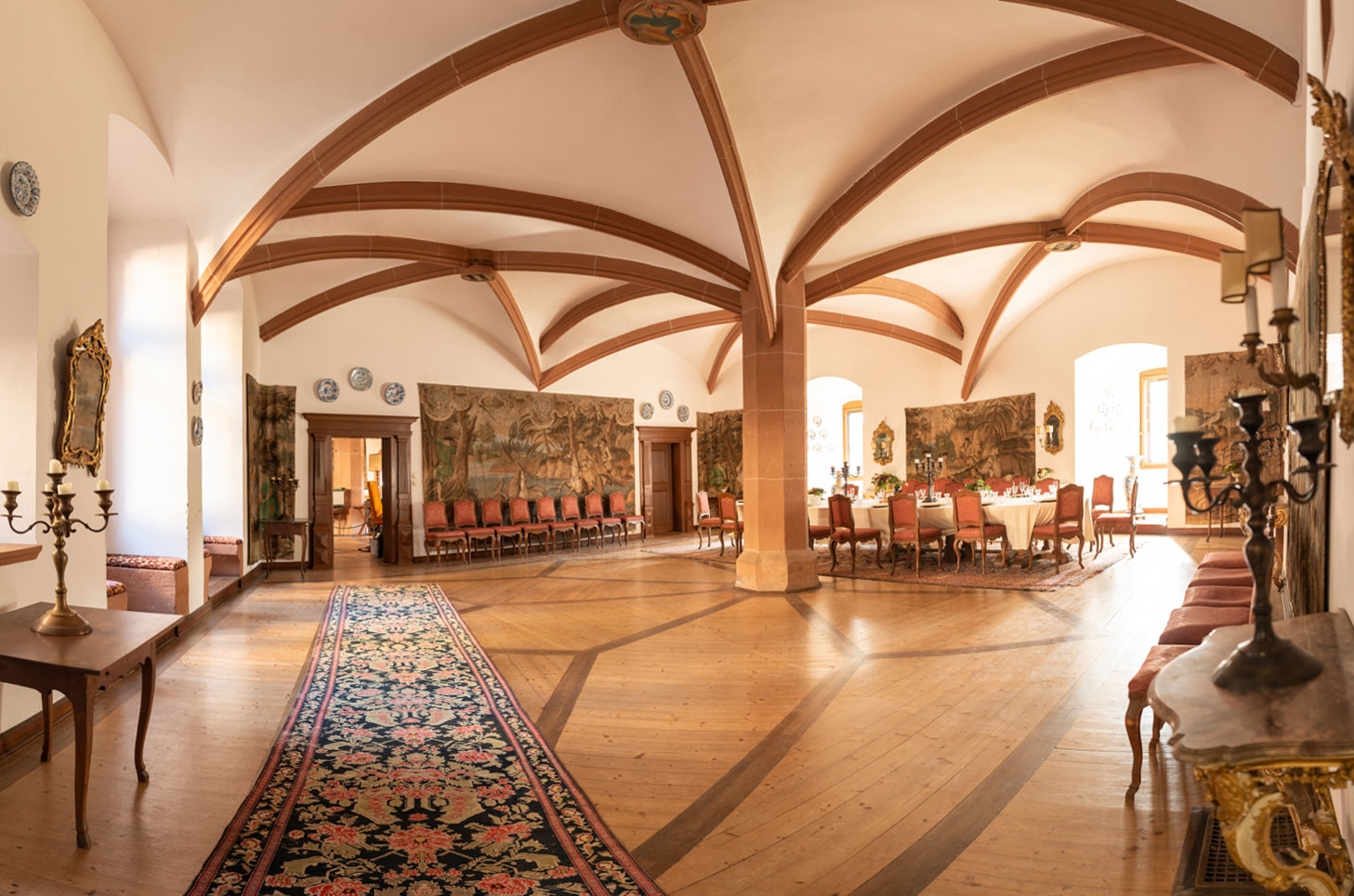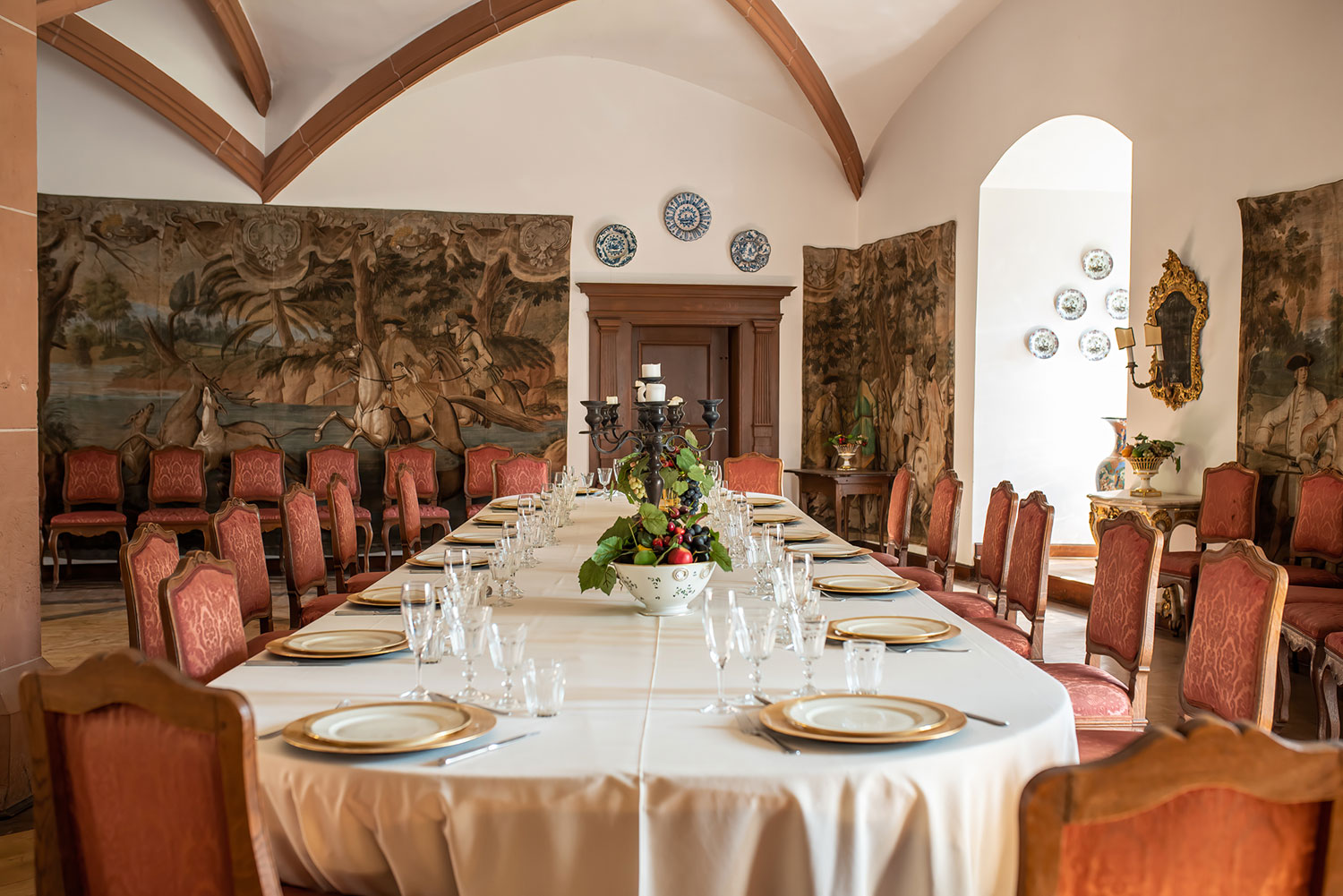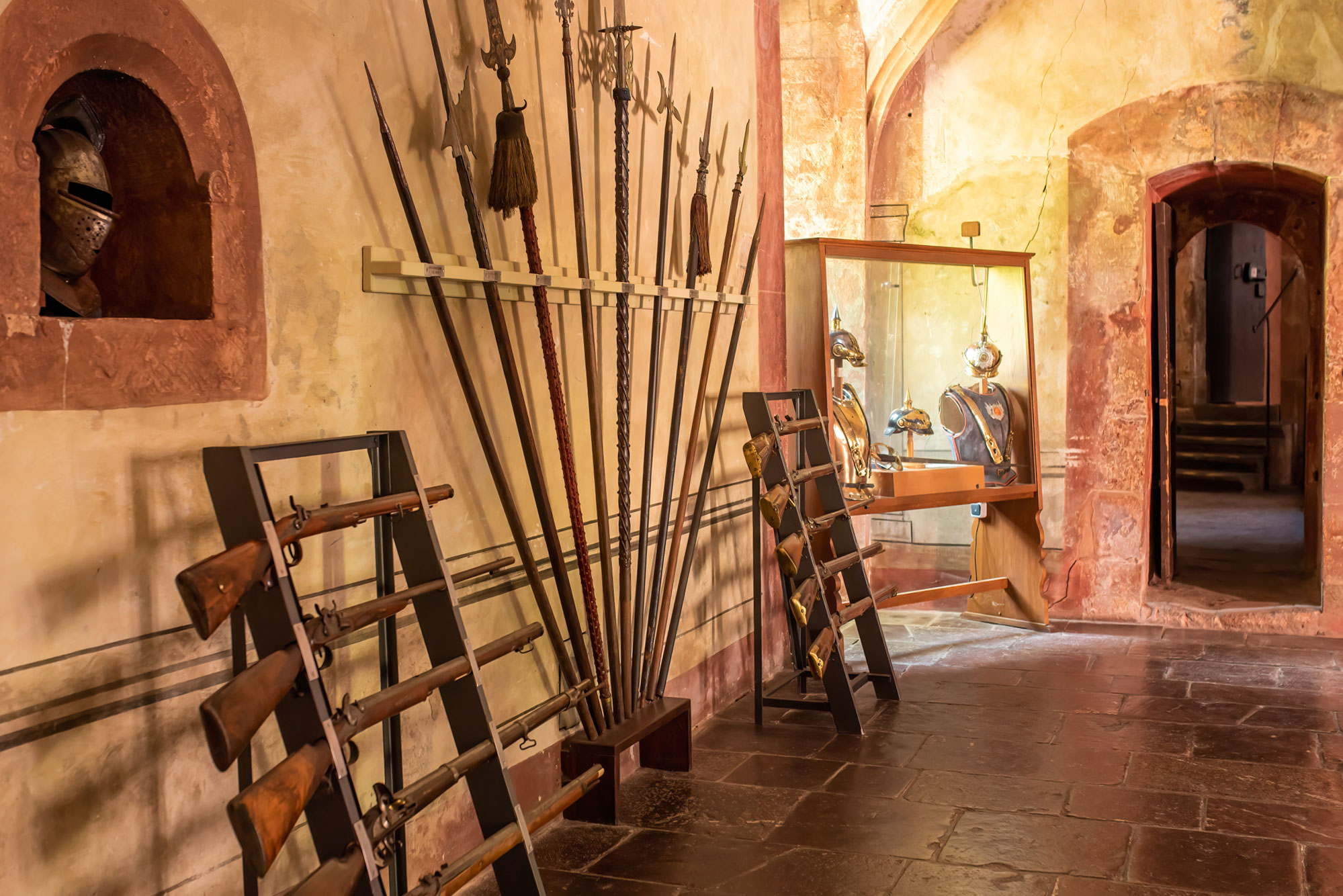The Staufer residential building originally contained two halls with flat beamed ceilings on the main floor. The western one, which had a fireplace from the beginning, was later divided into two rooms, which were given ribbed vaulted ceilings in the 15th century. Around the middle of the 16th century, Count Anton had the walls and ceilings decorated with a wealth of paintings. However, the rooms also had colorful decorations before this, as the left room, which is already referred to as the "Painted Room" in old inventories, contains remnants of Gothic painting.
The heraldic symbols of both families, beams and chevrons, were arranged in a checkerboard pattern to form a coat of arms wallpaper, probably to mark a marriage between the houses of Ysenburg and Hanau in 1332. Similarly, a rare early example of a genealogy of coats of arms appears on the north wall.
The fields of the vaulted ceiling, on the other hand, show prophets and evangelist figures that were added in 1546. A particularly graceful example of Büdingen Renaissance art is an allegorical depiction of the different types of music. The designs were probably created by the Mainz artist Hans Abel, the execution by the Büdingen painter Caspar Wallrab.
These paintings had their own fate. They were painted over again soon after they were created, but for the most part they have been excellently preserved. They survived the centuries until 1941, when the colorful traces were rediscovered and then gradually uncovered and restored in the post-war years.
The room decoration continues in the other two rooms. In the entrance room, we are confronted by the legendary hero Hercules fighting the Hydra, who is joined by the hero Samson from the Old Testament. The sequence of paintings in the last room of the palace is inconsistent and fantastic, including the oldest view of the castle itself. From the bright bay window, which Count Wolfgang-Ernst had added in 1610, there is a charming view of the picturesque castle courtyard.
